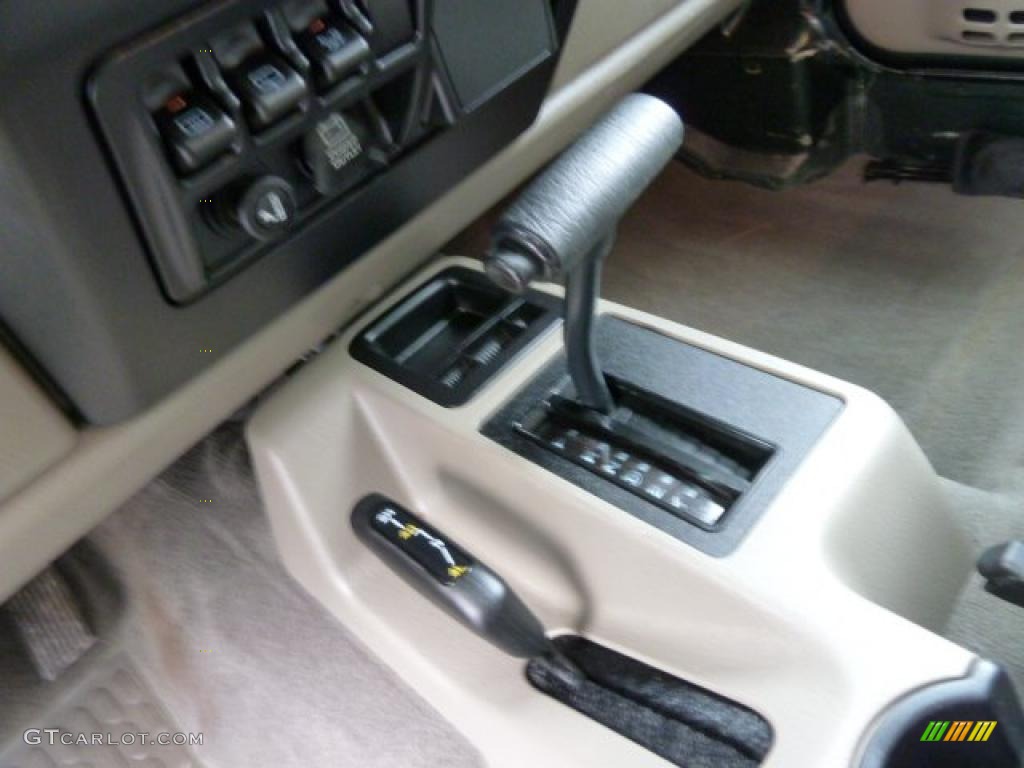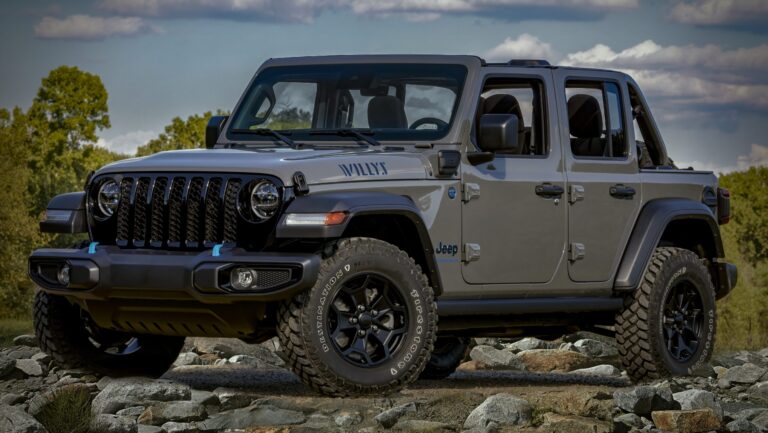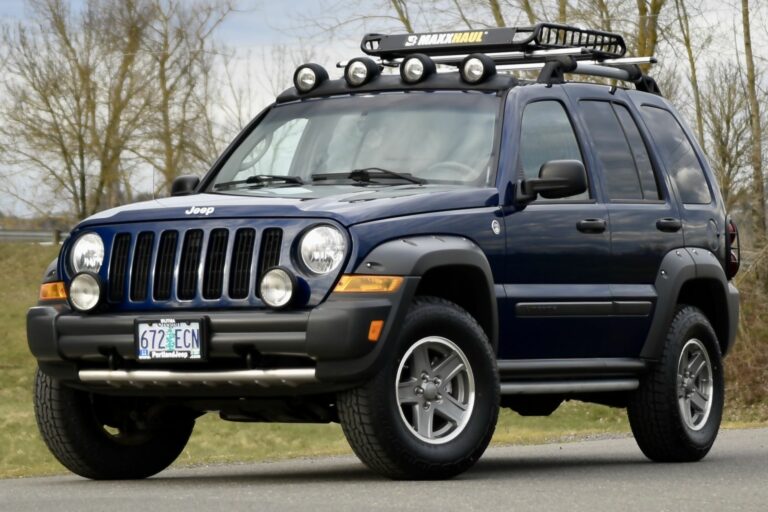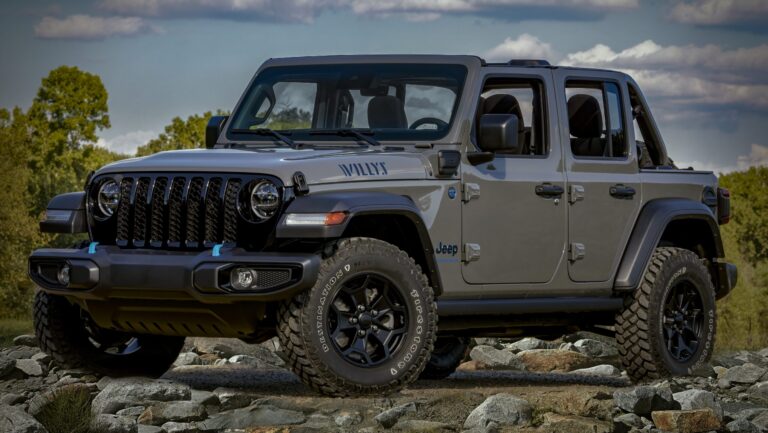1997 Jeep Wrangler Automatic For Sale: Your Guide to Owning an Icon
1997 Jeep Wrangler Automatic For Sale: Your Guide to Owning an Icon jeeps.truckstrend.com
Introduction: The Enduring Allure of the 1997 Jeep Wrangler Automatic
The year 1997 marked a pivotal moment in Jeep history with the introduction of the TJ generation Wrangler. This wasn’t just another incremental update; it was a revolutionary leap forward, blending the iconic, rugged charm of its predecessors with significant advancements in comfort, safety, and drivability. Among the various configurations, the 1997 Jeep Wrangler Automatic stands out as a particularly desirable model. For many, it offers the perfect marriage of classic Jeep aesthetics and modern convenience, making it accessible to a wider range of enthusiasts, from dedicated off-roaders to those simply seeking a unique and versatile daily driver.
1997 Jeep Wrangler Automatic For Sale: Your Guide to Owning an Icon
This comprehensive guide is designed for anyone considering the purchase of a 1997 Jeep Wrangler with an automatic transmission. We’ll delve into why this specific model year and transmission choice are so appealing, what to look for when buying, essential ownership tips, and what challenges you might encounter. If you’re searching for a vehicle that embodies freedom, adventure, and timeless appeal, a 1997 Jeep Wrangler Automatic might just be your perfect match.
The Genesis of a Legend: Understanding the 1997 TJ Generation
The 1997 model year heralded the arrival of the TJ, replacing the leaf-sprung YJ. This transition brought about a host of improvements that redefined the Wrangler experience:
- Coil Spring Suspension: The most significant upgrade, the TJ adopted a Quadra-Coil suspension system, providing a dramatically smoother ride on pavement and significantly improved articulation and off-road capability compared to the YJ’s leaf springs. This change alone made the TJ a more comfortable and capable vehicle.
- Refined Interior: While still distinctly utilitarian, the TJ’s interior was a notable step up in ergonomics and amenities. It introduced dual airbags, an improved dashboard layout, and better seating, making it more livable for daily use.
- Iconic Styling: The TJ retained the classic round headlights and seven-slot grille, ensuring it remained instantly recognizable as a Jeep Wrangler, even while incorporating modern design cues.
- The Heart of the Beast: The 4.0L Inline-Six: The vast majority of 1997 Wranglers were equipped with the legendary 4.0-liter AMC 242 inline-six engine. Known for its robust reliability, ample low-end torque, and incredible longevity, this engine is often considered one of the best ever produced by Jeep.
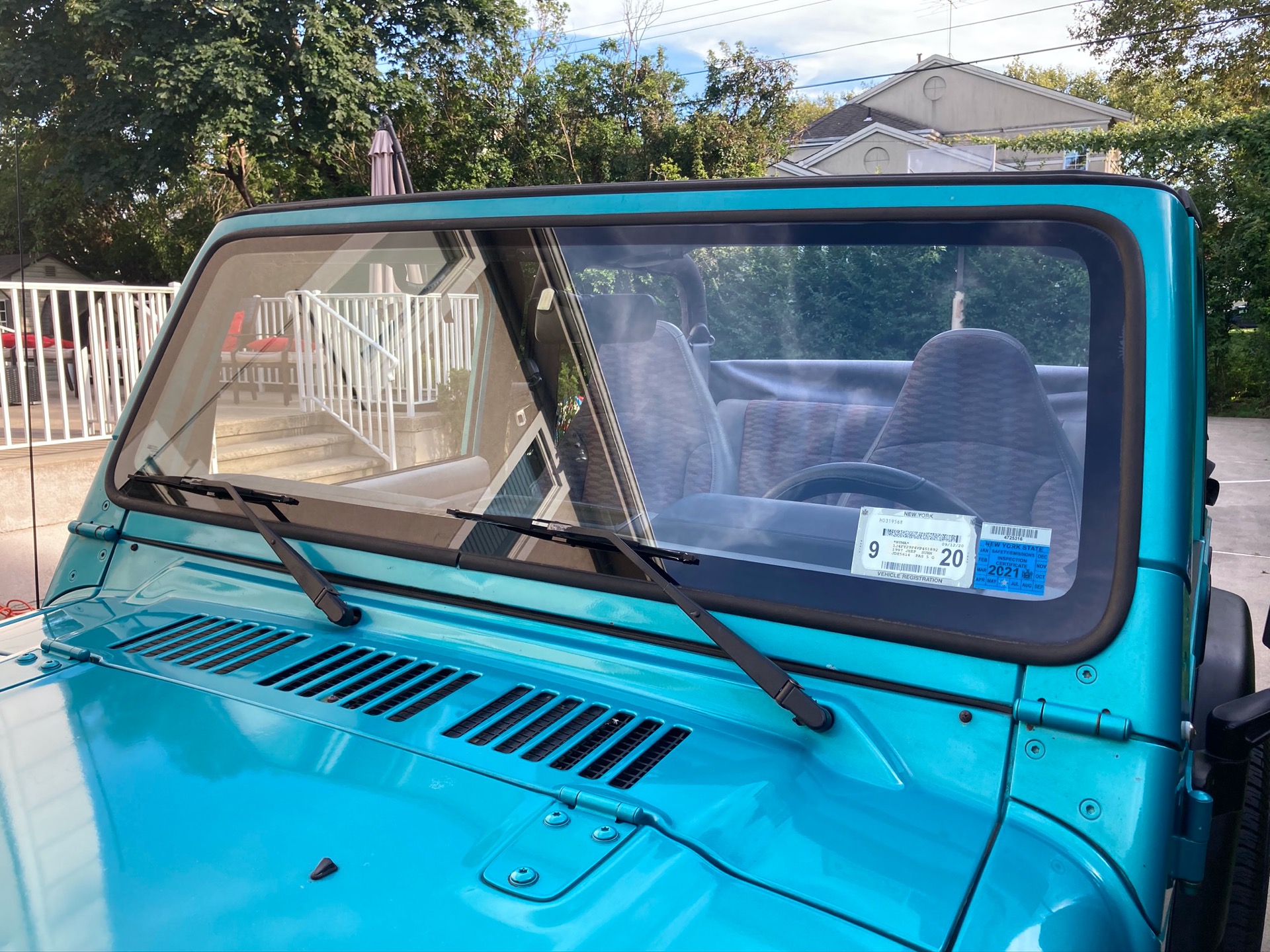
Why the Automatic Transmission in a 1997 Wrangler?
While purists might lean towards a manual transmission, the automatic option in the 1997 TJ offers distinct advantages that appeal to a broad audience:
- Ease of Driving: In congested urban environments or stop-and-go traffic, an automatic transmission significantly reduces driver fatigue. It makes the Wrangler a much more pleasant daily commuter.
- Off-Road Benefits: For many off-road scenarios, particularly technical rock crawling or navigating steep inclines, an automatic can be superior. It allows the driver to focus on steering and line choice without worrying about clutch modulation, providing smoother power delivery and reducing the chances of stalling.
- Accessibility: An automatic transmission opens up the world of Jeep ownership to individuals who may not be proficient with a manual or simply prefer the convenience.
- Durability: The 1997 automatic transmission, primarily the Aisin-Warner 32RH (a robust 3-speed unit), is renowned for its durability and reliability when properly maintained. It’s a proven workhorse that can handle the rigors of off-roading.
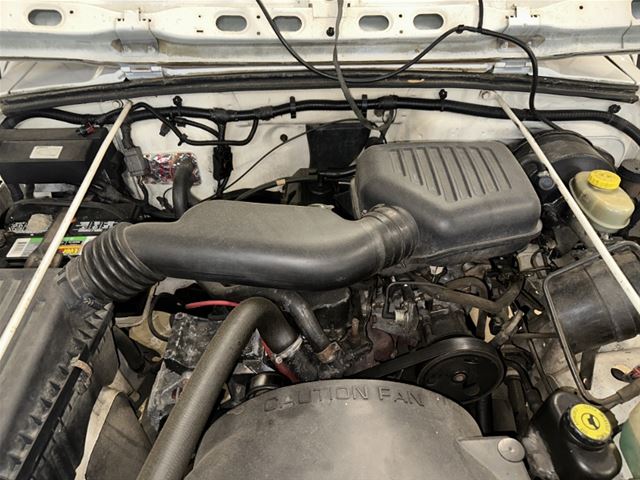
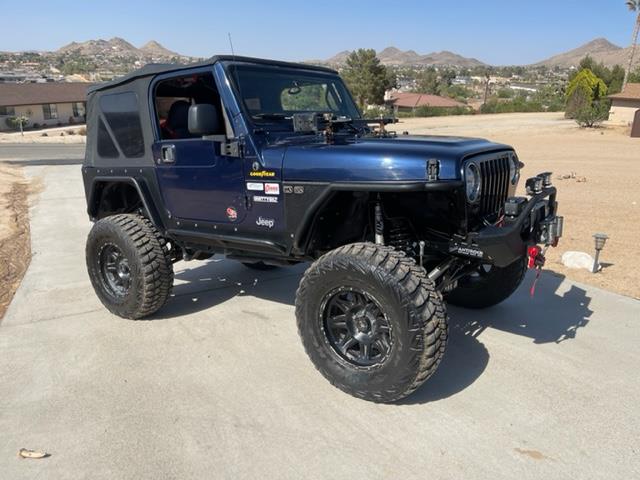
Key Features and Specifications of the 1997 Jeep Wrangler Automatic
Understanding the core components of the 1997 TJ Automatic is crucial for a potential buyer:
- Engine: 4.0L (242 cu in) AMC Inline-6. Output: Approximately 181 horsepower and 222 lb-ft of torque. Known for its bulletproof reliability.
- Transmission: Aisin-Warner 32RH 3-speed automatic. A simple, yet incredibly tough transmission, well-suited to the 4.0L engine’s torque curve.
- Transfer Case: Typically the NV231 Command-Trac, a part-time 4WD system with 2Hi, 4Hi, and 4Lo settings. Highly reliable and widely supported by the aftermarket. Some rarer models might have the NV242 Selec-Trac full-time 4WD.
- Axles: Dana 30 front axle and Dana 35 rear axle are standard on most models. The optional Dana 44 rear axle (often found on Saharas or with specific packages) is a significant upgrade for serious off-roaders.
- Suspension: Quadra-Coil four-link suspension with coil springs at all four corners. Provides significantly improved ride quality and articulation compared to earlier Wranglers.
- Body-on-Frame Construction: Ensures robust durability and ease of modification.
- Removable Top and Doors: The quintessential Jeep experience, offering unparalleled open-air driving. The windshield can also be folded down.
- Safety Features: Driver and passenger airbags were standard, a first for the Wrangler, alongside improved seatbelts.
What to Look For When Buying a 1997 Jeep Wrangler Automatic
Purchasing a 25-year-old vehicle requires careful inspection. Here’s a comprehensive checklist:
-
Rust, Rust, Rust (The Primary Concern):
- Frame: This is paramount. Inspect the frame rails thoroughly, especially near the control arm mounts (front and rear), the skid plate area, and the sections above the rear axle. Look for flaking, bubbling, or perforations. Significant frame rust is a deal-breaker unless you plan a full frame-off restoration.
- Body: Check the floorboards (lift the carpet), rocker panels, fender flares, and the tailgate (especially around the hinges and spare tire carrier).
- Underbody: Inspect brake lines, fuel lines, and exhaust for excessive corrosion.
-
Mechanical Condition:
- Engine (4.0L I6): Listen for unusual noises (knocks, ticks, squeals). Check for oil leaks (rear main seal, valve cover gasket are common but manageable). Look at the color and level of engine oil. Ensure it starts easily and idles smoothly.
- Transmission (32RH Automatic): Check the transmission fluid (should be reddish, not dark brown or black, and smell clean, not burnt). During a test drive, ensure shifts are smooth and timely, without slipping, clunking, or hesitation.
- Transfer Case: Check for leaks. Engage 4WD (4Hi and 4Lo) during the test drive to ensure it shifts in and out smoothly.
- Axles: Listen for humming or grinding noises, especially when turning. Check for fluid leaks around the differentials.
- Suspension: Look for worn bushings, cracked springs, or leaking shocks. Bounce each corner of the Jeep to check shock dampening.
- Steering: Check for excessive play in the steering wheel. Look for leaks in the power steering pump or lines.
- Brakes: Check pedal feel, listen for grinding noises, and ensure the vehicle stops straight.
-
Electrical System: Test all lights (headlights, tail lights, turn signals, brake lights), gauges, wipers, horn, radio, and HVAC system.
-
Interior and Exterior:
- Interior: Check seats for rips, tears, or excessive wear. Inspect the dashboard for cracks and ensure all controls work. Look for signs of water leaks (damp carpets, mold).
- Exterior: Assess the condition of the paint, soft top or hardtop (if present), and doors. Check for accident damage or poor bodywork.
-
Modifications: Many Jeeps are modified. Evaluate the quality of modifications. A properly installed lift kit with reputable components is a plus; a poorly installed, cheap lift can cause issues. Be wary of extensive, poorly executed electrical or structural modifications.
-
Documentation: Request service records, title history (ensure it’s a clean title, not salvage or rebuilt), and ownership history. A well-documented Jeep often indicates a caring owner.
Tips for a Successful Purchase and Ownership
- Get a Pre-Purchase Inspection (PPI): Even if you’re knowledgeable, have an independent mechanic specializing in Jeeps or off-road vehicles perform a thorough PPI. This can uncover hidden issues and save you thousands.
- Research Market Value: Use online classifieds, auction sites, and enthusiast forums to gauge current prices for similar models in your area based on condition, mileage, and features.
- Budget Beyond the Purchase Price: Assume you’ll need to put some money into maintenance, repairs, or desired modifications shortly after purchase. A realistic budget will prevent surprises.
- Join the Community: Jeep forums, Facebook groups, and local clubs are invaluable resources for advice, troubleshooting, and finding parts.
- Regular Maintenance is Key: The 4.0L engine and 32RH transmission are robust, but regular fluid changes (engine oil, transmission fluid, transfer case fluid, differential fluid) and preventative maintenance will ensure longevity.
- Rust Prevention: If you live in a rust-prone area, consider applying undercoating or rust inhibitors annually. Wash the underside of the vehicle regularly, especially after driving on salted roads.
- Embrace the Jeep Lifestyle: Owning a Wrangler is more than just having a vehicle; it’s an invitation to adventure, customization, and a vibrant community.
Challenges and Solutions
- Rust: The biggest challenge. Solution: Thorough pre-purchase inspection, diligent rust prevention, and professional repair for minor issues. Avoid heavily rusted frames.
- Aging Components: As a 25-year-old vehicle, wear items like suspension bushings, hoses, belts, and sensors will need replacement. Solution: Proactive maintenance, budget for these replacements, and learn basic DIY mechanics.
- Fuel Economy: The 4.0L I6, combined with the brick-like aerodynamics and often larger tires, is not fuel-efficient (typically 14-18 MPG). Solution: Accept it as part of the experience. Proper maintenance helps optimize efficiency.
- Noise/Leaks: Soft tops can be noisy at highway speeds and prone to leaks. Solution: Replace worn soft tops, upgrade to a premium aftermarket top, or invest in a hardtop for quieter, more secure driving.
1997 Jeep Wrangler Automatic: Estimated Price Guide
Please note: Prices are highly variable based on condition, mileage, modifications, geographical location, and market demand. This table provides general ranges for a 4.0L I6 automatic model.
| Aspect | Description | Estimated Price Range (USD) | Notes |
|---|---|---|---|
| Vehicle Condition | Poor/Project: Significant rust, major mechanical issues, extensive repairs needed. | $4,000 – $7,000 | Often requires major frame/body work, engine/transmission rebuild, or full restoration. Best for experienced DIYers or those with deep pockets. |
| Fair/Driver: Visible wear, some rust, minor mechanical issues, drivable but needs TLC. | $7,000 – $12,000 | Common category. May need brakes, suspension components, fluid changes, cosmetic fixes. Good starting point for someone willing to invest time/money. | |
| Good/Well-Maintained: Minor cosmetic flaws, solid frame, good mechanicals, well-documented history. | $12,000 – $18,000 | Increasingly rare to find in this condition. Fewer immediate issues, higher resale value. | |
| Excellent/Restored: Near-showroom condition, minimal rust, recent major service/restoration. | $18,000 – $25,000+ | Highly sought-after. Often has low mileage or has undergone a comprehensive frame-off restoration. Collector’s item potential. | |
| Key Factors Affecting Price | |||
| Mileage | Lower mileage generally commands a higher price. | Varies | Under 100k miles is premium; 100k-150k is common; over 150k will be lower unless fully rebuilt. |
| Rust | Extent of frame and body rust is the single biggest determinant of value. Minimal rust = higher price. | Significant impact | A rust-free frame can add thousands to the value. Serious rust can render a vehicle almost worthless for a non-DIY buyer. |
| Modifications | High-quality, desirable modifications (e.g., proper lift, good tires, upgraded axles) can increase value. Poorly done or extreme mods can decrease it. | Can vary price by +/- $1,000-$5,000+ | Look for professional installation and reputable brands. Be wary of "chopped" or poorly welded components. |
| Trim Level | Sahara (more features) usually commands more than Sport. SE (4-cyl) will be less than Sport/Sahara (6-cyl). | Varies | A well-equipped Sahara with the 4.0L engine and automatic transmission will be at the higher end. |
| Location | Rust-belt states often have lower prices for rustier vehicles; dry states command higher prices for cleaner examples. | Varies | California, Arizona, Texas tend to have higher prices for cleaner TJs. |
| Service History | Comprehensive service records add significant value and peace of mind. | Up to +$1,000 | Demonstrates diligent ownership and can indicate fewer hidden issues. |
| Hardtop/Soft Top | Having both, or a good condition hardtop, can increase value. | Up to +$1,000-$2,000 | A new soft top costs around $500-$1000; a hardtop can fetch $1000-$2000 used. |
Frequently Asked Questions (FAQ)
Q: Why is the 1997 model year significant for the Jeep Wrangler?
A: The 1997 model year marked the debut of the TJ generation, which introduced coil spring suspension for a much smoother ride and better off-road articulation, along with modern safety features like airbags. It’s considered a highly desirable sweet spot between classic Jeep ruggedness and modern comfort.
Q: What automatic transmission does the 1997 Wrangler have?
A: The 1997 Jeep Wrangler 4.0L with an automatic transmission typically features the Aisin-Warner 32RH 3-speed automatic. It is known for its robust design and reliability.
Q: Is the 4.0L engine in the 1997 Wrangler reliable?
A: Absolutely. The 4.0L inline-six is legendary for its durability and longevity. With proper maintenance, these engines commonly last well over 200,000 miles, and often significantly more.
Q: What are the main rust areas I should check on a 1997 TJ?
A: The most critical area is the frame, particularly around the control arm mounts, skid plate, and directly above the rear axle. Also check the floorboards, rocker panels, and the tailgate. Rust is the biggest determinant of a TJ’s value and structural integrity.
Q: Can I daily drive a 1997 Jeep Wrangler Automatic?
A: Yes, many people use 1997 TJ Wranglers as daily drivers. The automatic transmission makes commuting in traffic much more manageable. However, be prepared for less refined road manners compared to modern SUVs, including higher road noise and lower fuel economy.
Q: How much should I budget for modifications or repairs after purchasing?
A: For a "good driver" condition TJ, budgeting $1,000-$3,000 for immediate maintenance items (fluids, tune-up, worn bushings) is wise. If you plan for lift kits, larger tires, or other performance upgrades, costs can range from $1,500 to several thousands, depending on the scope.
Q: Are parts readily available for the 1997 TJ?
A: Yes, parts availability is excellent. Due to the TJ’s popularity and long production run (1997-2006), both OEM and a vast array of aftermarket parts are widely available.
Q: Is the automatic transmission better than a manual for off-roading?
A: It depends on personal preference and the type of off-roading. Automatics provide smoother power delivery and less driver fatigue in technical crawling situations, allowing the driver to focus on steering. Manuals offer more direct control and engine braking in certain scenarios. Both are highly capable off-road.
Conclusion: Your Adventure Awaits
The 1997 Jeep Wrangler Automatic is more than just a used vehicle; it’s an invitation to adventure, a customizable canvas, and a testament to enduring automotive design. Its blend of the TJ generation’s significant improvements with the convenience of an automatic transmission makes it a highly desirable and accessible choice for a wide array of enthusiasts. While purchasing a 25-year-old vehicle comes with its considerations, particularly rust and aging components, the rewards of owning such a capable, iconic, and community-rich vehicle far outweigh the challenges for the right buyer.
By conducting thorough research, performing a diligent inspection, and understanding the nuances of this specific model, you can confidently embark on the journey of owning a piece of Jeep history. Whether you plan to hit the trails, cruise with the top down, or simply enjoy the unique character of a classic Wrangler, the 1997 Jeep Wrangler Automatic stands ready to deliver an unforgettable experience. Your next adventure starts here.
